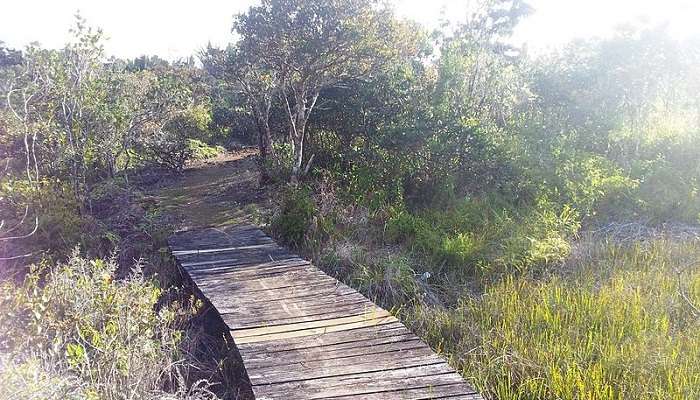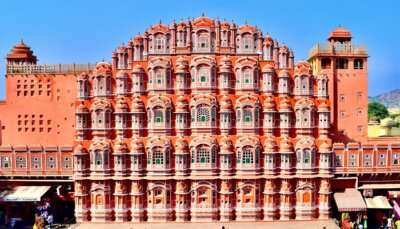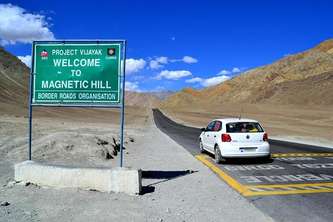Unique Wildlife And Diverse Landscapes Around Shaba National Reserve To Witness In 2026

Shaba National Reserve boasts some exotic and diverse landscapes, including riverside forests and dry grasslands amidst the vast area of 239 square kilometres it covers around Shaba Hill volcano. Along the Ewaso Ngiro River, you’ll find elephants, crocodiles, hippos, and buffaloes, while predators like leopards, lions, cheetahs, jackals, and hyenas roam the area. The reserve is no less than a paradise for bird enthusiasts, with over 450 species, including the elusive. Even the name Shaba signifies the rugged hills in the local language. Notably, it is famously linked to conservationist Joy Adamson, who released her first hand-raised leopard in these premises.
Things You Can Do In and Around Shaba National Reserve
Shaba National Reserve in northern Kenya, near Samburu and Buffalo Springs reserves (making a protected trinity) hosts unique wildlife like the Special Five: Somali giraffes, oryx antelopes, Somali ostriches, Grevy’s zebras, and gerenuks. The park was made famous by Joy Adamson and the lioness Elsa, subjects of the 1966 film Born Free, further being the setting for the film Out of Africa and for the reality show Survivor: Africa.
1. Go For The Game Drive Safari

How can a trip to any national reserve be truly justified without the safari drive. Game drives safaris typically last not more than a few hours, with morning and afternoon drives being the most-chosen options. Morning game drives usually start early, around sunrise, to catch the wildlife when they are most active. Whereas the afternoon game drives offer the opportunity to witness the sunset and observe nocturnal animals as they become active. Game drives are meticulously planned and carefully conducted in open safari vehicles, led by experienced guides who provide valuable insights into the wildlife and surroundings. Visitors can expect to see a variety of wildlife, including the Special Five, predators, antelopes, and an abundance of bird species.
Best time to visit: All time
Timings: 8 Am – 6 Pm
Must Read: Places To Visit In Kenya
2. Opt For Guided Nature Walks

A more insightful exploration of the reserve than the safari drive, the Guided nature walks allow visitors to explore the reserve on foot, accompanied by experienced guides. Nature walks typically also last a few hours (longer than the safari drives), with morning or late afternoon again being the preferred times. Visitors can discover the smaller details of the reserve such as tracks, plants, insects, and birdlife in clear depth. The guides share their knowledge about the flora, fauna, and cultural significance of the area.
Best time to visit: All time
Timings: 8 Am – 6 Pm
3. Visit The Samburu Village

Step out of the reserve enclosure and you will get to explore local Samburu culture by visiting any nearby village and interacting with the close-knit yet friendly Samburu community. Witnessing their traditional dances and rituals and gaining insights into their way of life will elevate your experience and in the right terms, you would have explored a foreign land.
Suggested Read: Cafes In Nairobi
Explore The Riverside Forests

Shaba National Reserve features riverside forests, which provide a slightly different habitat for various bird species. A guaranteed paradise for bird enthusiasts, with over 450 species, birdwatchers will enjoy exploring these forests and can do so throughout the day. If you don’t want to miss observing Nile crocodiles along these riverbanks, then Crocodile Point is a must-visit location. Mid-morning or early afternoon visits are recommended, as crocodiles are often seen basking in the sun during these times.
Entrance Fees to the Shaba National Reserve:
If you are planning a trip to Shaba National Reserve, then pack your identity verification before anything else. The entry fee is levied differently based on whether you are a citizen or resident of Kenya or neither. Note that this fee merely covers your entry into the premises, there is a separate charge levied for booking a vehicle and other activities like safari etc
1. Park Entry Fee

When opting to accommodate inside the park enclosure, please note that park fees are applicable for each 24 hours of your stay only so plan your stay accordingly. Any potential visitor should know that pre-booking is advised for safaris and activities in the park as well as accommodations, especially during the peak season.
These new Nairobi National Park fees 2024-2025 are valid from 1st January to 31st December 2025. 100$ per person per day for adult international visitors while children/students pay 20$ per person. African Citizens that are adults pay 25$ per person per day, while children pay 10$ per day.
- Citizen of Kenya: Adult – KSH 500
- Resident of Kenya: Adult – KSH 1000
- Non-Resident- Adult: USD 70 and Child: USD 40
Suggested Read: Masai Mara National Park
2. Vehicle Fee

Vehicle fee has to be paid daily, even when you exclude the visitors in the vehicle. Additional charges are applicable for activities like safaris unless pre-booked with a recognised tour operator.These new Nairobi National Park fees 2024-2025 are valid from 1st January to 31st December 2025. 100$ per person per day for adult international visitors while children/students pay 20$ per person. African Citizens who are adults pay 25$ per person per day, while children pay 10$ per day.
- Less than 6 seats: KSH 400
- 6 to 12 seats: KSH 1200
- 13 to 25 seats: KSH 2400
Best Time To Plan A Trip To Shaba National Reserve

The best time to visit Shaba National Reserve is surely during the dry seasons from June to September, considered the peak season here. Firstly, you will be greeted by abundant wildlife sightings around water sources. And then, prevailing pleasant weather with clear skies and comfortable temperatures provides for optimal conditions for wildlife photography and birdwatching. Not to forget the high chances of spotting the Special Five and the Big Five. And then from January to February. You will be accompanied by fewer visitors compared to peak season.Through the mixed weather with occasional rain, wildlife sightings may be slightly less abundant.But there will be far less competition for safari trails and accommodations, not to forget the potentially lower costs for travel. And, you will have the opportunity to see resident and migratory bird species.
It is advised in your best interest to avoid visiting Shaba National Reserve during the rainy seasons from March to May. Not only the wildlife sightings decrease as animals disperse for water, but the safari activities and photography also become challenging. The atmosphere is eerily quieter owing to fewer number of tourists resulting in some lodges and camps being outrightly closed. Though one consolation still remains that bird watching opportunities may still be available. Stay for two or three days within the reserve premises and you will surely explore the entirety of what the reserve has to offer. It is recommended to couple your trip to Shaba National Reserve with a visit to the adjoining reserves – Samburu and Buffalo Springs as well for a complete Kenyan safari adventure.
Further Read: Flea Markets In Nairobi
Now that you have a list of things in mind that you can do when you visit the Shaba National Reserve, make sure you plan your trip to Kenya at the earliest to this fabulous destination for the experience of a lifetime. Don’t miss out on such amazing opportunities and book your tickets now!
For our editorial codes of conduct and copyright disclaimer, please click here.
Cover Image Source: Marc Samsom for Wikimedia Commons
Frequently Asked Questions About Shaba National Reserve:
Why is Shaba National Reserve famous?
The park was made famous by Joy Adamson and the lioness Elsa, subjects of the 1966 film Born Free, further being the setting for the film Out of Africa and for the reality show Survivor: Africa.
What are the visiting timings of this park?
Shaba National Reserve, sharing the borders with Samburu and Buffalo Springs reserves, offers a comparatively less crowded and more off-the-beaten-path safari experience. The park has four gates in total. All the gates are open throughout the year from 06:00 AM to 06:00 PM.
What precautions are necessary to visit Shaba National Reserve?
No, visiting Shaba National Reserve is not dangerous as such. But you should be aware that Shaba is located in a malaria-prone environment, so please consult your doctor for effective medication before visiting this location. You can also use DEET-containing mosquito repellent for effective protection.
Is Lake Victoria worth visiting?
Passing through a total of three African countries namely Kenya, Uganda, and Tanzania, Lake Victoria is the largest lake in the whole continent. It is one of the best places to visit if you are vacationing in Kenya and are seeking to find peace amidst its tranquil environment, while also exploring the extensive variety of aquatic life at Lake Victoria.
Is Mt Kenya National Park open for tourists?
Situated at an altitude of 5,199 metres, Mt. Kenya is not just the second highest peak in Kenya but is also recognized as a UNESCO World Heritage Site. This national park was established with the primary goal to conserve the endangered wildlife of the surrounding areas of Mt. Kenya. With time, it has now been developed into a full-fledged tourist attraction, becoming one of the top sightseeing places in Kenya that is known for its exhilarating wildlife safari tours.
People Also Read:
National Parks In India National Parks In Goa National Parks In Uttarakhand

Innovative Content Writer Focused on Producing High quality, Original Content that drives traffic and engages readers. Experienced in Content strategy and analytics to measure content performance using tools such as SQL, Power BI, Excel.











